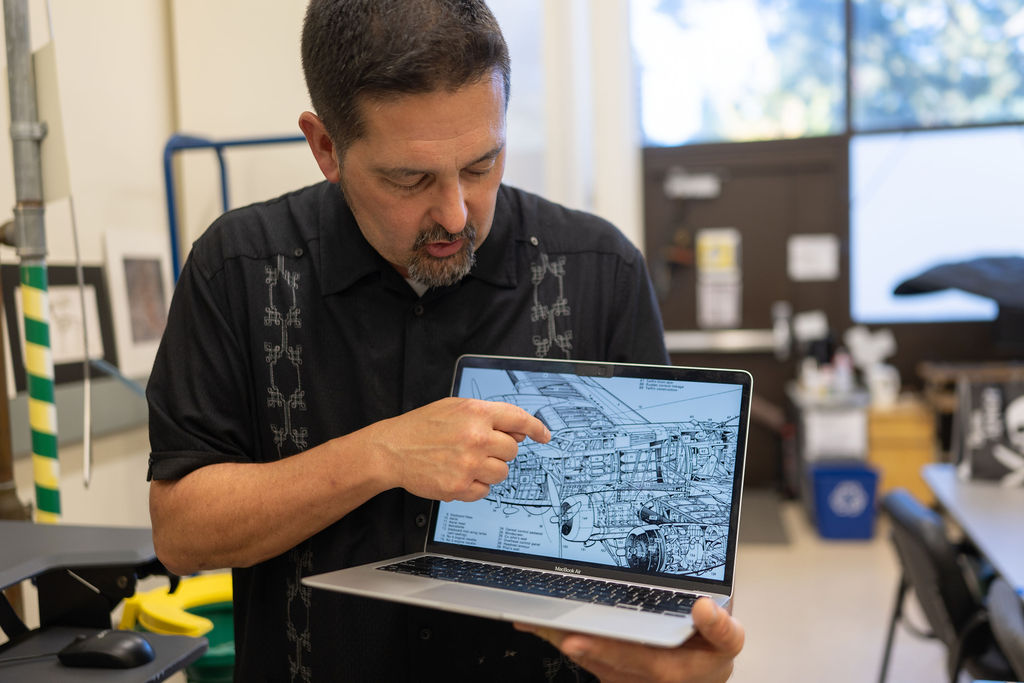Science
UC Berkeley Project Uses Crowdsourcing to Recover WWII Soldiers

A groundbreaking initiative at the University of California, Berkeley, aims to utilize modern technology and community engagement to expedite the recovery of fallen servicemen from World War II. Led by associate professor of anthropology Jun Sunseri, this project seeks to build a comprehensive resource library to assist archaeologists worldwide in their efforts to locate and identify the remains of service members who remain unaccounted for.
Approximately 80,000 U.S. servicemembers, primarily from World War II, are still missing, according to the Defense POW/MIA Accounting Agency (DPAA). Of these, around 38,000 are believed to be recoverable. Each year, teams of archaeologists and military experts engage in excavation missions at sites where aircraft are presumed to have crashed, often facing challenging conditions and limited timeframes.
Sunseri’s journey to this project is deeply personal. His grandfather, Stanley, served as a mechanic in the U.S. Army Air Forces during the war. The stories of loss that Stanley shared with his family inspired Sunseri to combine his engineering background with archaeology. With experience in automotive accident reconstruction, he recognized a need for a systematic approach to identify aircraft remnants at crash sites, which often become indistinguishable over time.
To address this issue, Sunseri is spearheading the Missing American Aircrews Project, which adopts a three-pronged approach to create a digital comparative collection. The first phase involves crowdsourcing high-quality photographs and videos of military aircraft, uniforms, and life support equipment. Individuals visiting military museums are encouraged to capture and submit images using their smartphones, contributing valuable data that can aid recovery teams.
“Even though I have a mechanical engineering degree, many folks volunteering on these projects don’t have that background,” Sunseri explained. “They might benefit from some helpful digital resources like those we’re trying to build.”
The second phase of the project seeks to leverage the expertise of military history enthusiasts and veterans. While not everyone may have access to physical collections, Sunseri envisions their contributions in organizing and validating the crowdsourced materials. This collaborative effort will help refine the information about specific aircraft models and personal effects, aiding archaeologists in the field.
The final stage will compile the gathered data into extensive, downloadable files sorted by airframe, period, and mission details. This information could be accessed offline by recovery teams during their missions, enabling them to navigate crash sites more effectively. For instance, if a diver is investigating a suspected aircraft wreck in the Pacific Ocean, they could quickly reference 3D models of the aircraft and its components for guidance.
Sunseri’s lab group, which includes students such as Rory Hinkle and Juliette Lovell, has already begun engaging with air museums and citizen scientists. They are developing workflows and tutorials to train new volunteers in the project’s three key aspects: intake, validation, and deployment of resources.
“It’s a scrappy little lab group of archaeologists here with zero funding, so we’re doing our best,” Sunseri remarked. He has undergone training with the DPAA and is working towards formalizing collaborations that could see this comparative collection adopted by the agency for use in recovery missions globally.
Last summer, Sunseri participated in a recovery mission in Germany, where he observed firsthand the challenges faced by teams without comprehensive resources. He believes that the development of a digital comparative collection could significantly enhance the success rate of these missions.
Beyond the technical aspects, Sunseri sees this project as a means to foster community engagement and bridge social divides. He hopes the collaborative nature of the work will resonate with a broad audience and inspire a renewed interest in military history and the stories of those who served.
“Ultimately, it’s about giving these families closure and finally bringing these service members home,” Sunseri stated, emphasizing the human impact behind the scientific endeavor. For more information about the initiative, interested individuals can visit the Missing American Aircrews Project website or contact Jun Sunseri directly via email.
-

 Science3 weeks ago
Science3 weeks agoInventor Achieves Breakthrough with 2 Billion FPS Laser Video
-

 Health3 weeks ago
Health3 weeks agoCommunity Unites for 7th Annual Into the Light Walk for Mental Health
-

 Top Stories3 weeks ago
Top Stories3 weeks agoCharlie Sheen’s New Romance: ‘Glowing’ with Younger Partner
-

 Entertainment3 weeks ago
Entertainment3 weeks agoDua Lipa Aces GCSE Spanish, Sparks Super Bowl Buzz with Fans
-

 Business3 weeks ago
Business3 weeks agoTyler Technologies Set to Reveal Q3 Earnings on October 22
-

 Health3 weeks ago
Health3 weeks agoCurium Group, PeptiDream, and PDRadiopharma Launch Key Cancer Trial
-

 World3 weeks ago
World3 weeks agoR&B Icon D’Angelo Dies at 51, Leaving Lasting Legacy
-

 Entertainment3 weeks ago
Entertainment3 weeks agoMother Fights to Reunite with Children After Kidnapping in New Drama
-

 Health3 weeks ago
Health3 weeks agoNorth Carolina’s Biotech Boom: Billions in New Investments
-

 Entertainment3 weeks ago
Entertainment3 weeks agoRed Sox’s Bregman to Become Free Agent; Tigers Commit to Skubal
-

 Science3 weeks ago
Science3 weeks agoNorth Carolina’s Biotech Boom: Billions Invested in Manufacturing
-

 Top Stories3 weeks ago
Top Stories3 weeks agoFormer Mozilla CMO Launches AI-Driven Cannabis Cocktail Brand Fast








